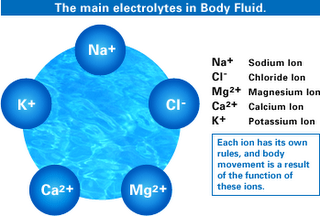Soft Tissue Misalignment
This simply refers to something in the body that is not in the right place that is not a bone or joint. It may be an organ out of place, a hernia, intervertebral disc problems, or something shifted as a result of something that is taking up space like a swelling, a cyst or tumor etc. Organs can shift, some more notoriously than others. The most common organs by far to shift or drop are the uterus, bladder and intestine. The reason that this occurs is because the internal muscle tone that has to do with supporting these organs is weakened or unbalanced. This most always goes back to nerves and nerve energy. There could be a problem with the spine out of place that is affecting the nerves to the area (chiropractic subluxation). There could have been an injury to the nerves. Sometimes, the nerves simply need nutrition. Maybe there is an infection in the nerve or a chemical affecting the nerves. The nerve energy could be low because of blood sugar or mineral problems or adrenal-thyroid-heart problems. The body can just be run down from too much stress and not enough sleep or rest.
There are different degrees of organ displacement that can occur. Most will respond to nutrition directed at the nerves and overall body vitality. There may be cases that have gone too far and require surgical correction.
When an organ shifts out of its normal position, it often will close off portions of normal lymph drainage. This results in a backup of normal metabolic toxins and this pooling of metabolic waste can have an effect on other organs, as well as the displaced organ. This may also contribute to a buildup of fluid in the abdominal area. A bladder or uterus malposition may interfere with drainage from the legs and contribute to edema in the legs. All can cause extra weight from fluid retention.
Another type of soft tissue misalignment is a hernia. This occurs when something protrudes out into an area it’s not supposed to be in. There are abdominal hernias, inguinal hernias, umbilical hernias, hiatal hernias and even disc hernias. An abdominal hernia is a more general term for when the internal organs protrude through abdominal muscles and bulge outward, especially when intra-abdominal pressure is increased, as in doing a sit-up. An umbilical hernia is a specialized type in which the protrusion occurs at or around the umbilicus or belly button. An “outy” belly button is actually a minor umbilical hernia. An inguinal hernia occurs in males when a part of the abdominal content descends down into the canal that leads to the testicle (called the inguinal canal). This is what is being checked for with, ”Turn your head and cough,” during a physical exam. A hiatal hernia occurs at the hiatal opening in the diaphragm muscle. The diaphragm or breathing muscle has a hole in it called the hiatus. Through this opening passes the aorta, vena cava, lymph vessels, the vagus nerve and the esophagus or food tube. On occasion, a portion of the stomach can be pulled or pushed up through the hiatus of the diaphragm muscle. When this occurs, it is called a hiatal hernia. This can cause reflux and stomach distress and can also interfere with lymphatic drainage and in some instances, cause pressure on the vagus nerve which affects the heart and other organs. If it is bad enough, it can be seen in an upper GI series of X-rays. Most of these can be helped with a manual manipulation of the area. Very bad hiatal hernias may require surgery.
All of these hernias, excluding the disc hernia which is a specialized kind of hernia, have two main components – increased abdominal pressure and weak muscles. Increased abdominal pressure is most commonly caused by abnormal digestion with bloating, although abnormal lymph drainage may also be a factor. Weak muscle tone usually goes back to problems with the nerves to the muscles. Exercise of the abdominal muscles can certainly help prevent abdominal hernias if done in time. If these two factors are addressed, many hernias become manageable with care. Some, if too large, must receive surgical correction.
A disc hernia refers to a problem with the fibro cartilage pad that is present between the bones of the spine. In this case, a part of the internal matter of the disc bulges to the outside of the disc. This can only occur if something “chews up” the inside of the disc. Studies have shown that a healthy disc is stronger than the bone. Muscle testing almost always reveals an immune system challenge most likely associated with some kind of infection. This, of course, begs the question, “Why is the infection there?”. Reasons are many, including heavy metal poison and lack of nutrient flow to the area.
Most discs respond well to traction and spinal manipulation. Many chiropractors have built their practices on this. I have personally found that if the immune system is supported specifically for the assumed infectious agent, resistant cases will respond that would not with traction and manipulative therapy alone. There are a small number of cases that due to the extent of the herniation, combined with the intense level of associated pain may be surgical cases.
Soft tissue misalignment may also occur from something that pushes the tissue out of place. The result is often an interference with normal lymphatic drainage and other flows. It may be something as benign as swollen membranes or an area of clotted blood. It may be something serious such as a cancerous tumor. Most commonly, it is a cyst. Swollen membranes respond well to lymphatic cleaners such as antronex or spanish black radish. Clotted blood responds to blood cleaners such as red clover or milk thistle.
Cysts are basically pus-filled sacs. In order for these to develop, you have to have something that is generating pus, (like an infection) and a backed up lymphatic system. Ordinarily, the pus and toxins would exit through the lymph system. If this cannot occur, the body will wall the toxins off to protect the rest of the area and form a sac or cyst. If the hormones are out of balance, the body tends to overdo the walling off and a fibroid cyst forms. Build the immune system up and clean the lymph system to handle. Fibroids may require extra enzymes and glandular balancing.
There is not much that I am going to say regarding cancer, but I will say this. When cancer research is done, there is a special type of mice used called nude mice. These mice have a very weak immune system. They have to use these mice because they can’t seem to get tumors to grow in mice with healthy immune systems. These genetically weakened mice are filled with chemicals to get cancer tumors to grow in them. Now, they can start the research to see how drugs work on the tumors. Maybe I look at things differently than most, but this appears a bit backwards to me. To me, common sense would dictate that the least that you would want to do in handling cancer would be to clean the body of chemicals and build up the immune system.
This muscle testing technique cannot determine if a person has cancer or not. If other findings suggest that this may be present, the proper steps need to be followed. If cancer is medically diagnosed via biopsy or other test, I recommend downloading the information pertaining to that specific type of cancer from the website cancerdecisions.com so that difficult decisions can be made. The importance of nutrition for the body as a whole to strengthen vitality and the ability to fight such a condition cannot be stressed enough in such cases.
Soft tissue misalignment in general is handled by determining the cause and handling appropriately, whether it involves nervous, immune or lymphatic system support and by providing the proper nutrition for healing. Though some few cases may require external intervention, most respond very well to the natural healing approach. If you, or someone close to you, suspect that you may need help with soft tissue misalignment, call (260) 459-6160 (Fort Wayne) (773) 929-3964 (Chicago).
David A Murdock, DC











